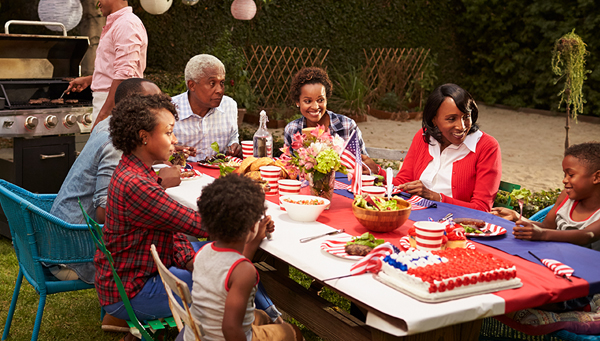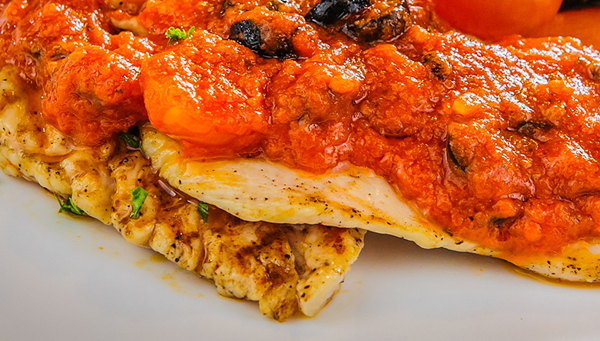Newsletter: julio 2017
Independence at the Dinner Table

As July 4th approaches, Americans are getting ready to celebrate another year of independence. And as summer gets into full swing, families are also celebrating an independence of sorts — freedom from school-year schedules and the constraints on time and energy that often make family dinners feel stressful or difficult to accomplish.
There’s another way to celebrate independence that may not be as obvious: Building independence skills in family members through the act of gathering for dinner. From the youngest diners all the way through to the adults, everyone can benefit from taking ownership of the family meal in some way. Here are some ideas to help you make every day “Independence Day” at your table:
For young children
Toddlers and preschoolers are often eager to help, but let’s be honest — how many of us cringe inwardly at the idea of the mess and chaos that can come with little “helpers” in the kitchen? Still, finding a way for little ones to contribute is important for their development and will pay off in later years with older kids who are used to pitching in. Allow young children to fetch and carry items like napkins, spoons and non-breakable cups and dinnerware to the table; sprinkle pre-measured seasonings; stir; transfer whole ingredients like cherry tomatoes into serving bowls; and stand on a stool to wash produce in the sink.
For grade-school kids
As kids enter the elementary years, they’ll be more capable of helping, within a wide spectrum of developmental skills. Tuning in to your own child’s strengths at this stage will help as you suggest tasks they can do to help with family dinner. Emerging math skills can be used to count, sort and help with “doubling” recipes; better motor skills mean kids can pour, shake, carry heavier/more breakable objects. As fine motor coordination improves, kids can progress from tearing ingredients like basil leaves and lettuce, to using kitchen shears to “chop” items and finally to learning basic knife skills and kitchen safety.
Beyond building independence with skills, grade-school kids are likely to start wanting more of a say in what the family eats and what goes on their plates. Let them plan one or two meals each week and practice making shopping lists of the necessary ingredients. Some late-elementary kids will even be ready to cook their chosen dishes with an adult at their side.
For more on grade-school children and dinner time, read Adding Competence and Rules Into the Mix »
For teens and tweens
Research shows that by age 14, only about a third of kids will sit down to dinner with their families regularly — but the majority of teens say they truly enjoy family dinner. While school and sports schedules can really impact the frequency of family meals for this age group, they also provide a good opportunity to invite the kids themselves to make some decisions about mealtimes.
Ask adolescents to help you decide on a family dinner schedule, suggest menus, and even weigh in on what the rules should be at the table (especially valuable with distractions like technology often appearing on the menu). By middle school, most kids can be trusted with larger cooking tasks and can use stoves and ovens safely as long as they’re taught proper technique. Find ways for them to take the lead on family dinner, and perhaps consider building in a “friend night” each week when they can invite someone to share your meal — making the table more welcoming and comfortable for the teens, and giving you another window into their social lives at the same time.
For more on dinner with teens, read Making the Most of Dinner With Adolescents »
For adults
Too often, dinnertime can become a burden that falls on the shoulders of only one person in a household. Make sure to regularly check in with one another about what your family dinners are like and what you want them to become. Creating a shared vision of mealtime, agreeing on division of labor and deciding ahead of time how you’ll make the table a no-stress zone will free everyone up to enjoy dinnertime together.
Read more in Getting off On the Right Foot: Creating a Dinner Ritual »
Don’t forget to include senior family members! If you’re able to share your mealtime with elderly parents or grandparents, they can also benefit from some careful attention to helping them be an independent — and welcome — dinner guest.
Family of the Month
This month, we’re pleased to introduce the Thompson family. See how a popular food blogger and meal planning expert tackles dinnertime in her house!
Real Family Dinner Projects: The Thompson Family »
Food

Enjoy summer’s bounty with Brenda Thompson’s fast and fresh Bruschetta Chicken Skillet!
Fun

It’s the perfect season for some outdoor family time. Relax during (or after) dinner with a game of “Use Your Senses.”
Conversation
Tackle the topic of independence and dive into American history with these Recipes for Conversation!
Recent Newsletters
- Warming Up Winter - enero 2026
- Home, and Homemade, for the Holidays - diciembre 2025
- Thanksgiving Traditions, Old and New - noviembre 2025
- Food as Comfort and Care - octubre 2025
- The State of Family Dinner - septiembre 2025
- Back to School Dinner Success - agosto 2025
- What’s Your Meal Planning Personality? - julio 2025
- A New Guide to Gathering - junio 2025
- Celebrating 15 Years of The Family Dinner Project - mayo 2025
- New Research: Family Dinners Boost Happiness - abril 2025
- Just the Two of Us - marzo 2025
- Ways to Build Community Through Dinner - febrero 2025


